E-commerce analytics play a critical role in the growth and success of online businesses, enabling informed decisions, developing more efficient strategies, and enhancing customer experience By 2023, there will be billions of customers with 2.64 completed online purchases, global e-commerce market projected growth rate It peaked at 17.1% in 2013 and is expected to maintain a steady growth rate of at least 8% in years a coming in. Given the amount of data available, it becomes increasingly important for companies to focus on the key metrics that truly drive success. In this article, we’ll explore various eCommerce analytics and important metrics that can unlock the overall growth potential of a company.
Read More: To Know about What is Ecommerce
What is Ecommerce Analytics?

Ecommerce analytics encompasses the process of gathering, analyzing, and interpreting data concerning online sales and customer behavior. The objective is to make well-informed business decisions based on the insights derived from tracking and measuring various metrics. These metrics i.e. conversion rate, average order value, customer lifetime value, and revenue by traffic source. By comprehending these metrics, businesses gain valuable insights into customer preferences, pinpoint areas for improvement, and optimize their marketing and sales strategies. To achieve this, ecommerce analytics employs tools and platforms such as Google Analytics to collect data, generate reports, and visualize trends. Ultimately, the utilization of ecommerce analytics aids businesses in driving growth and maximizing their online revenue.
Read More: To Know about Top Ecommerce Platform.
Types of Ecommerce Analytics

Descriptive Analytics
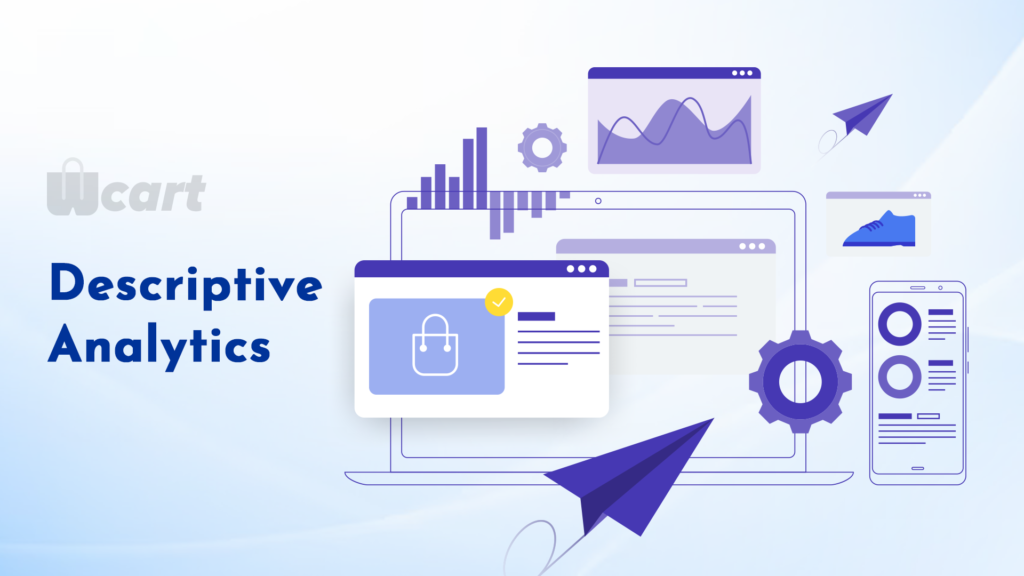
Descriptive analytics focuses on summarizing past data to provide insights into what has happened in the past. It involves analyzing historical sales data, customer demographics, and website traffic patterns. Descriptive analytics helps businesses understand their current performance and identify trends or patterns in customer behavior.
Diagnostic Analytics
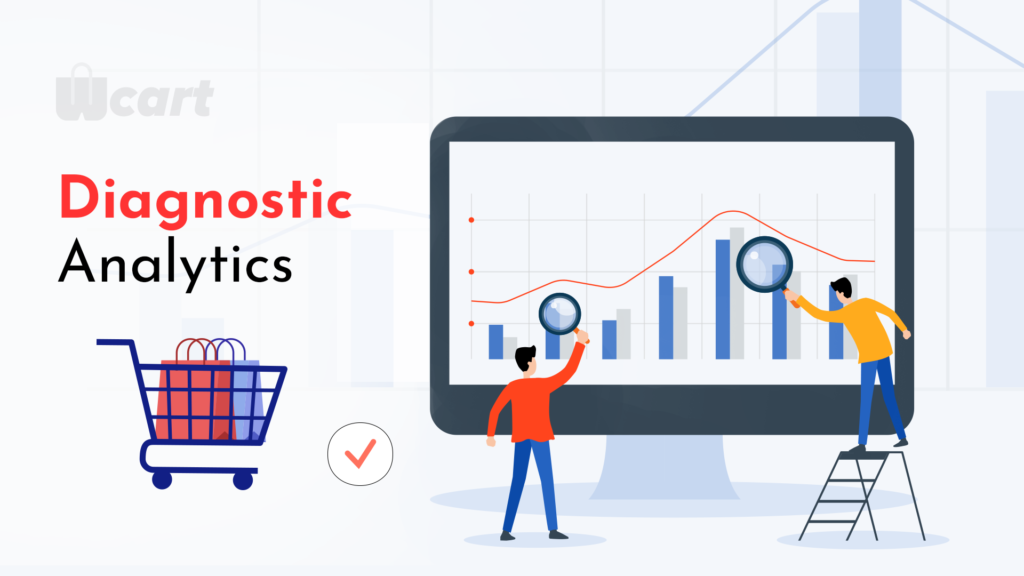
Diagnostic analytics goes a step further by examining why certain events or trends occurred. It involves analyzing the factors influencing customer behavior, such as the effectiveness of marketing campaigns, website usability issues, or product performance. Diagnostic analytics helps businesses identify the root causes of successes or failures to optimize their strategies.
Predictive Analytics
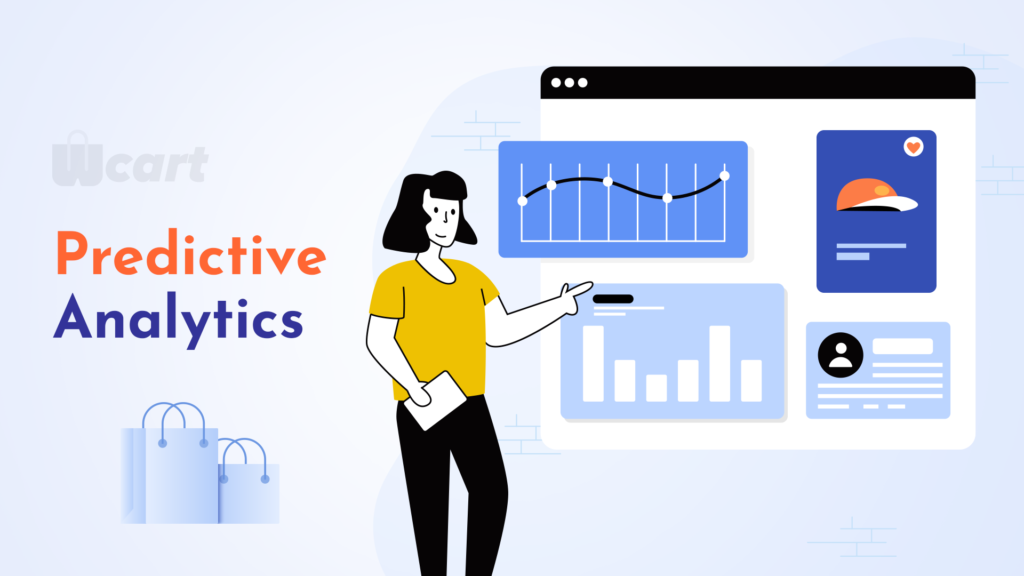
Predictive analytics is a powerful approach that leverages historical data and statistical techniques to forecast future outcomes. By analyzing customer behavior patterns, purchase history, and market trends, businesses can gain valuable insights and make informed predictions. This data-driven approach enables organizations to anticipate customer needs, identify potential opportunities, and make proactive decisions. By utilizing predictive analytics, businesses can take preemptive actions and stay ahead of the competition, ultimately driving growth and achieving success.
Prescriptive Analytics
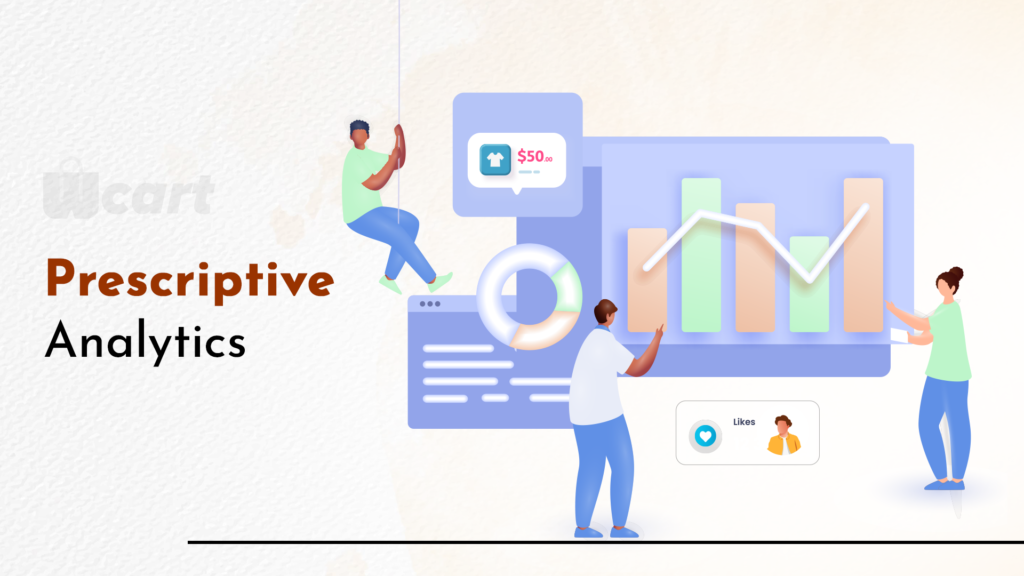
Prescriptive analytics takes predictive analytics a step further by providing recommendations and actionable insights. It involves using advanced algorithms and machine learning techniques to suggest the best action to achieve specific business objectives. Prescriptive analytics helps businesses optimize pricing strategies, personalize customer experiences, and make data-driven decisions.
Real-Time Analytics

Real-time analytics focuses on analyzing data in real-time or near real-time, allowing businesses to monitor and respond to changes or events as they happen. It involves tracking live website traffic, monitoring social media mentions, and analyzing customer interactions in real-time. Real-time analytics enables businesses to adjust immediately, identify emerging trends, and capitalize on time-sensitive opportunities.
Behavioral Analytics
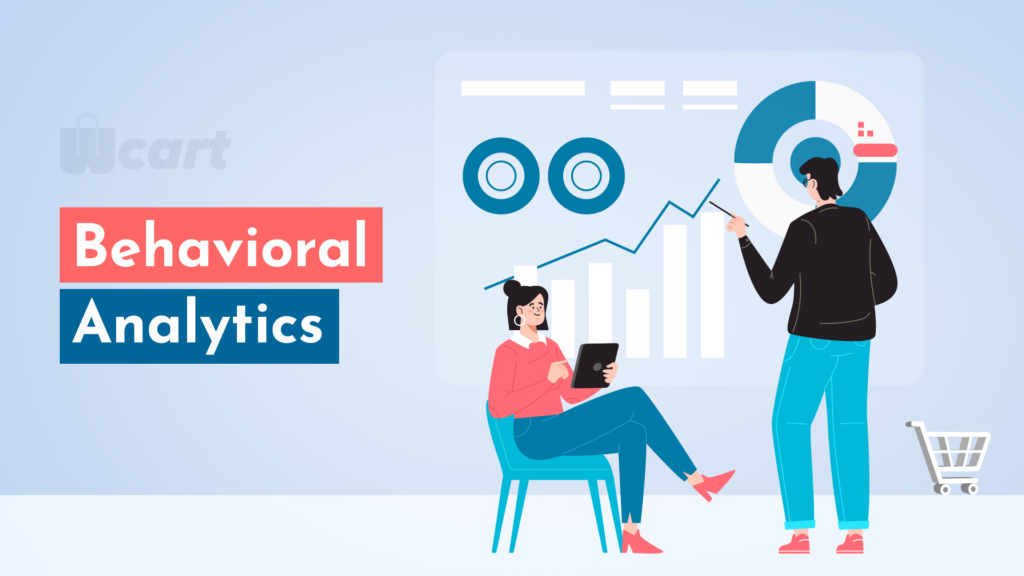
Behavioral analytics focuses on understanding customer behavior and interactions on an individual level. It involves tracking and analyzing user actions, such as clicks, page views, and time spent on specific pages, to gain insights into preferences, interests, and purchase intent. Behavioral analytics helps businesses personalize marketing messages, improve user experiences, and enhance customer engagement.
Segmentation Analytics
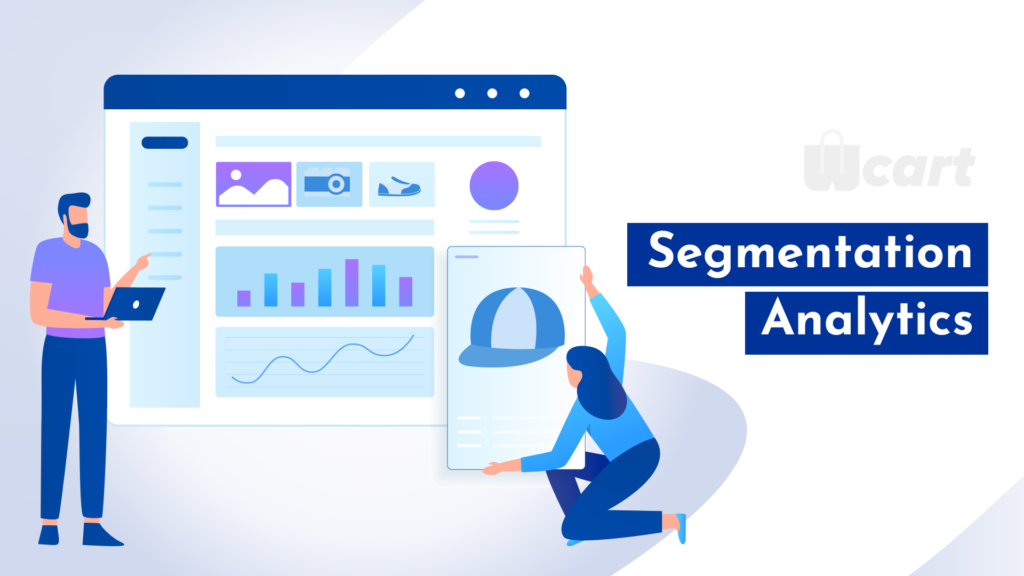
Segmentation analytics involves dividing customers into distinct groups or segments based on shared characteristics, preferences, or behaviors. It helps businesses understand customer segments, unique needs, and purchasing patterns. Segmentation analytics allows businesses to tailor marketing strategies, create personalized campaigns, and optimize customer targeting.
These different types of ecommerce analytics provide businesses with a comprehensive toolkit to analyze, interpret, and utilize data to drive growth, optimize operations, and improve the overall customer experience.
Key Areas of Analytic Metrics in Ecommerce
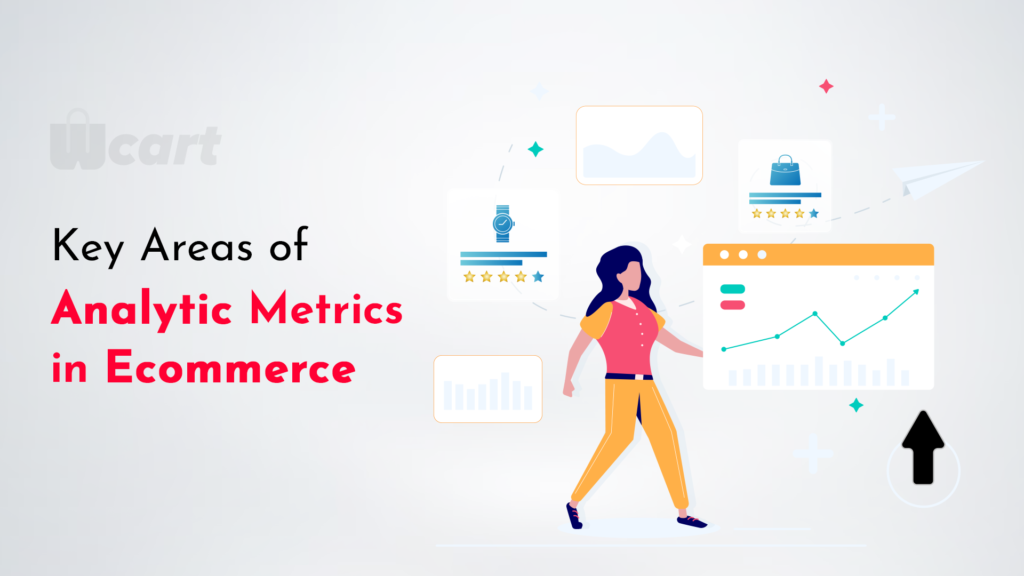
The following metrics are used in ecommerce analytics, let us see the metrics briefly:
Traffic Metrics:

- Total Website Visits: The total number of visits or sessions on your website.
- Unique Visitors: The number of distinct individuals who visit your website.
- Traffic Sources: Identifying the channels (organic search, paid advertising, social media, etc.) driving traffic to your website.
- Referral Traffic: The number of visitors referred to your website from external sources.
Engagement Metrics:
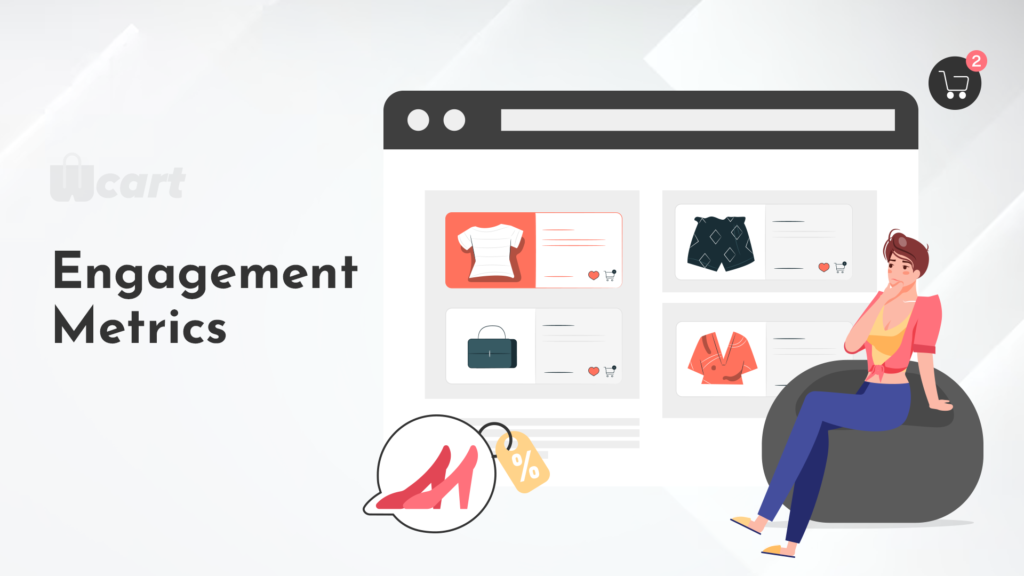
- Bounce Rate: The percentage of visitors who leave your website without engaging further.
- Time on Site: The average duration visitors spend on your website.
- Pages per Session: The average number of pages viewed during a single session.
Conversion Metrics:

- Conversion Rate: The percentage of visitors who complete a desired action, such as making a purchase or filling out a form.
- Average Order Value (AOV): The average value of orders placed on your website.
- Cart Abandonment Rate: The percentage of visitors who add items to their cart but leave without completing the purchase.
- Revenue per Visitor: The average revenue generated per visitor on your website.
Customer Metrics:
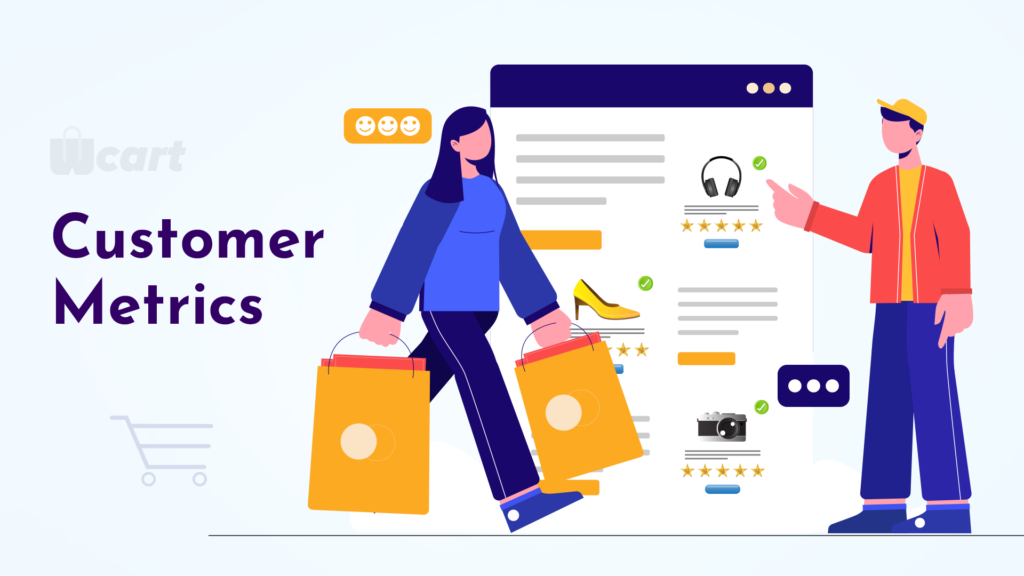
- Customer Lifetime Value (CLV): The total value a customer brings to your business over their entire relationship.
- Customer Acquisition Cost (CAC): The cost of acquiring a new customer.
- Churn Rate: The percentage of customers who stop engaging or making purchases.
- Repeat Purchase Rate: The percentage of customers who make multiple purchases.
Marketing Metrics:

- Return on Ad Spend (ROAS): The revenue generated for each dollar spent on advertising.
- Cost per Acquisition (CPA): The cost incurred to acquire a new customer through marketing efforts.
- Click-Through Rate (CTR): The percentage of people who click on an ad or a specific link.
- Conversion Rate by Marketing Channel: The conversion rate for each marketing channel (e.g., paid ads, email marketing).
Product Metrics:
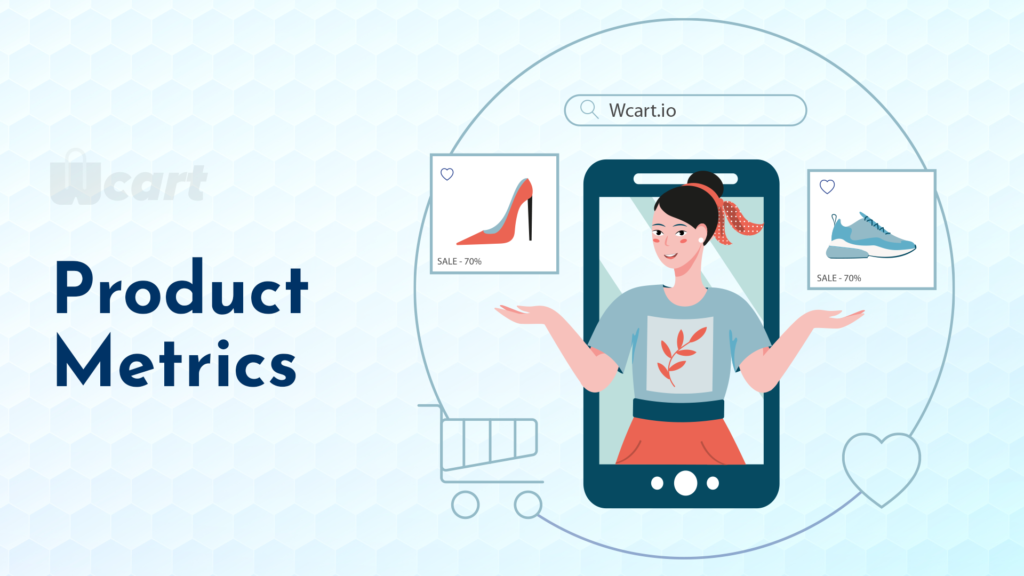
- Product Performance: Tracking sales, revenue, and customer engagement for individual products.
- Product Return Rate: The percentage of products returned by customers.
- Inventory Management Metrics: Monitoring inventory turnover, stockouts, and days to sell inventory.
User Experience Metrics:

- Website Load Time: The time it takes for your website to load.
- Mobile Responsiveness: Assessing the performance and usability of your website on mobile devices.
- User Feedback: Gathering feedback through surveys, ratings, and reviews to understand user satisfaction and preferences.
Financial Metrics:

- Gross Profit Margin: The percentage of revenue that remains after deducting the cost of goods sold.
- Net Profit Margin: The percentage of revenue remaining after deducting all expenses, including operating costs and taxes.
By monitoring and analyzing these key areas of analytics metrics in ecommerce, businesses can gain valuable insights into their website performance, customer behavior, marketing effectiveness, and financial health. This information enables data-driven decision-making and the optimization of strategies to drive growth, enhance the user experience, and maximize profitability in the competitive ecommerce landscape.
Conclusion
In conclusion, implementing effective e-commerce analytics is essential for achieving growth in an online business. By utilizing the right types of analytics and tracking key metrics, businesses can gain valuable insights into customer behavior, sales performance, marketing effectiveness, and inventory management. This data-driven approach enables businesses to make informed decisions, optimize strategies, and improve overall operational efficiency. By leveraging e-commerce analytics, businesses can drive growth, enhance customer experiences, and maximize their potential in the competitive online marketplace. So, embrace the power of ecommerce analytics and transform your data into dollars for unparalleled growth.
Frequently Asked Questions(FAQs)
1. What is ecommerce analytics?
Ecommerce analytics involves gathering information from various aspects that influence your online store. This data is then analyzed to understand changes in customer behavior and trends in online shopping.
2. What is the most popular ecommerce analytics tool?
Here are some of the best eCommerce analytics tools to help you grow your brand.
1. Google Analytics.
2. Kissmetrics.
3. Optimizely.
4. Hotjar.
5. Crazy Egg.
6. Glew.io.
7. Supermetrics.
8. Woopra
3. What are the key metrics to track in ecommerce analytics?
There are several key metrics that ecommerce businesses should track to assess their performance and facilitate growth. Some important metrics include:
1. Conversion Rate
2. Average Order Value (AOV)
3. Customer Acquisition Cost (CAC)
4. Customer Lifetime Value (CLV)
5. Cart Abandonment Rate
6. Return on Advertising Spend (ROAS)
4. What does an ecommerce data analyst do?
E-commerce business analysts specialize in analyzing, deconstructing, and interpreting the performance of online retail platforms and e-commerce stores. They possess advanced data analysis capabilities that enable them to pinpoint areas for enhancement in online sales and marketing strategies.
5. How can ecommerce analytics help in optimizing marketing strategies?
Ecommerce analytics play a crucial role in optimizing marketing strategies. By analyzing data and metrics, businesses can identify which marketing channels, campaigns, or tactics are driving the most traffic, conversions, and revenue. With this information, businesses can allocate their marketing budget effectively, focus on high-performing channels, optimize underperforming campaigns, and tailor their marketing efforts to target specific customer segments.




Leave a Reply